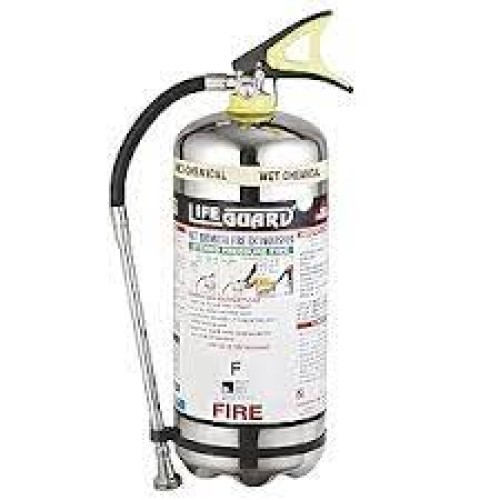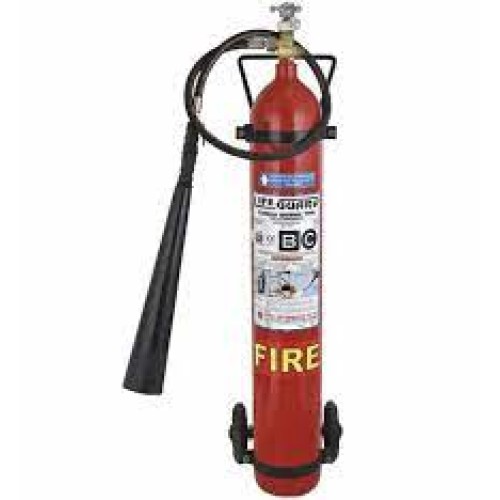The Lifeguard 9L Kitchen Fire Extinguisher is another highly specialized fire extinguisher designed for use in kitchen environments, particularly where the risk of grease and oil fires is prevalent. Below is an overview of its features and benefits: Key Features: 9-Liter Capacity: With a 9-liter capacity, this extinguisher is suitable for larger kitchens or commercial environments where fires might spread quickly. It provides a higher volume of extinguishing agent, making it ideal for areas with substantial cooking equipment. Class F Fire Protection: The Lifeguard 9L Kitchen Fire Extinguisher is specifically designed to tackle Class F fires, which involve cooking oils and fats (such as in deep fat fryers, stoves, or grills). This is crucial because standard extinguishers like water or dry powder are ineffective or hazardous on grease fires. Wet Chemical Agent: It uses a wet chemical agent, which works by cooling the fire and forming a soapy, foamy barrier that prevents the oil or fat from reigniting. This agent is specifically engineered to safely extinguish grease fires, which can be extremely dangerous and difficult to control. Multi-Class Fire Coverage: In addition to Class F, the extinguisher can also handle Class A fires (ordinary combustibles like paper or wood) and Class B fires (flammable liquids like oils or solvents), making it versatile and effective in various kitchen-related fire scenarios. Safe for Use on Electrical Fires: The wet chemical agent is safe for use on electrical fires (up to a certain voltage), such as those involving electrical kitchen appliances or wiring. This is a key feature in kitchen environments, where electrical equipment is often used alongside high-heat cooking devices. Enhanced Coverage: The 9L size offers greater coverage than smaller extinguishers, making it an excellent choice for larger kitchens, restaurants, catering services, and other commercial kitchens. It can deal with more extensive fires or those that have spread over a wider area. BS EN 3 and UL-Listed Certification: This extinguisher typically meets international standards like BS EN 3 and may also be UL-listed for safety, ensuring it is suitable for commercial kitchens and meets regulatory requirements. Easy to Use: The extinguisher typically operates using the P.A.S.S. method (Pull, Aim, Squeeze, Sweep), allowing kitchen staff or users to act quickly in an emergency situation. Environmental and Safety Considerations: Wet chemical agents are designed to be non-toxic, providing a safer alternative to other chemicals, and they minimize environmental impact. This makes it a good choice for commercial kitchens where food safety and environmental considerations are important.
Send Message

